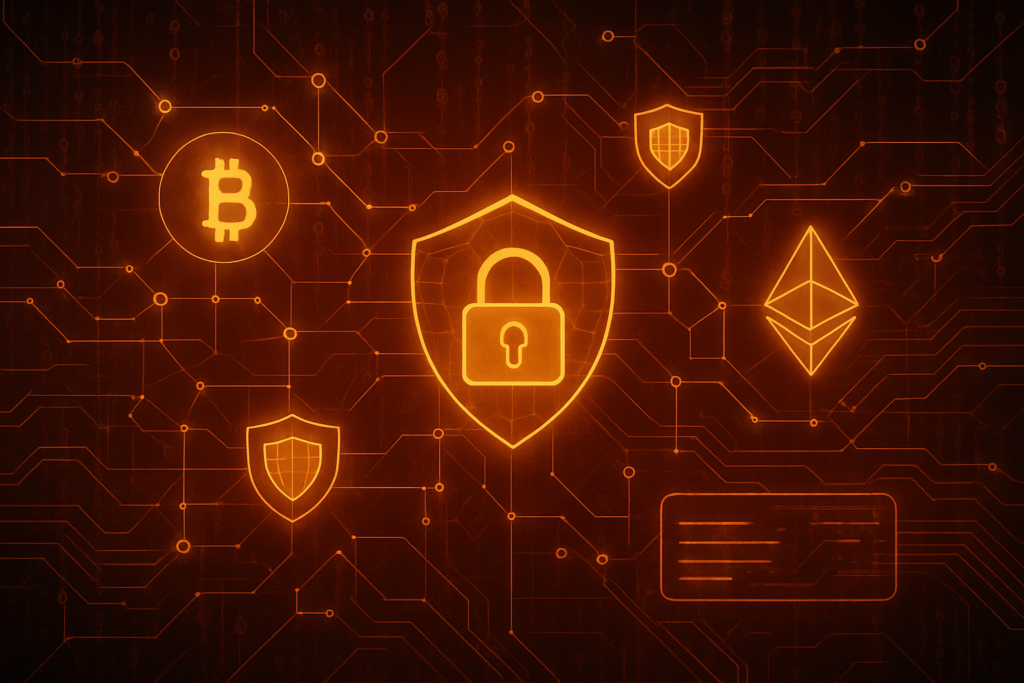
October 10, 2025 – The cryptocurrency ecosystem, a beacon of innovation and financial freedom, continues to grapple with a relentless tide of hacks and scams. With billions of dollars already siphoned off by malicious actors in the first half of 2025, the digital frontier has become a high-stakes battleground where vigilance is the ultimate currency. This escalating threat landscape underscores a critical truth: safeguarding digital assets is no longer merely advisable, but an absolute imperative for every participant in the Web3 space.
The immediate market reaction to major exploits is often a sharp dip in confidence, triggering temporary price corrections and a wave of FUD (Fear, Uncertainty, Doubt) across the community. While the market often recovers, each significant breach erodes trust, potentially slowing mainstream adoption and casting a shadow over the industry's transformative potential. For the crypto ecosystem to truly flourish, individual investors must arm themselves with robust security practices, transforming personal defense into a collective shield against systemic risk.
Market Impact and the Erosion of Trust
While this article focuses on preventative measures rather than a single event, the cumulative effect of crypto hacks and scams has a palpable impact on market sentiment and investor behavior. High-profile incidents, such as the estimated $1.46 billion Bybit hack attributed to North Korea’s Lazarus Group earlier this year, send ripples of concern throughout the market. Such events can trigger sell-offs, particularly in affected tokens or related DeFi protocols, as investors de-risk.
The ongoing threat of exploits fosters an environment of caution, potentially dampening trading volumes and liquidity for newer, less established projects. Technical analysis often reflects this underlying anxiety, with support levels being tested more frequently during periods of heightened security concerns. Compared to past events, the increasing sophistication of attacks, often leveraging AI, suggests that the market's resilience is constantly being tested. Sustained losses due to scams can lead to a long-term erosion of investor trust, making it harder for legitimate projects to attract capital and hindering the overall growth trajectory of the crypto economy.
Community and Ecosystem Response
The crypto community, developers, and regulators are collectively mobilizing to counter the escalating threat. On social media platforms like X and Reddit, discussions are dominated by warnings about new scam tactics, shared experiences of recovery, and calls for stricter security standards. Influencers and thought leaders play a crucial role in disseminating best practices and raising awareness about evolving threats, from sophisticated phishing to AI-powered deepfake scams. Community-led initiatives, such as the Shibarium Trustwatch, actively flag suspicious activities, acting as an early warning system against wallet drainers and fraudulent giveaways.
Developers, recognizing the urgency, are integrating "security by design" into new protocols and applications. This includes rigorous smart contract audits, the adoption of multi-signature (multisig) and Multi-Party Computation (MPC) wallets, and the deployment of AI and machine learning for real-time threat detection. Furthermore, regulators globally, from the European Union's MiCAR to proposed U.S. legislation like the GENIUS Act and CLARITY Act, are striving to establish clearer frameworks for digital assets. This regulatory push aims to enforce Know Your Customer (KYC) and Anti-Money Laundering (AML) compliance, provide consumer protection, and ultimately foster a more secure and accountable environment for all participants.
7 Essential Strategies to Bulletproof Your Crypto in 2025
As the digital asset landscape matures, so too do the tactics of malicious actors. Here are seven practical and easy-to-implement strategies to safeguard your crypto holdings in 2025:
1. Master Your Wallet Security with Cold Storage and Multisig
For any significant amount of crypto, hardware wallets (cold storage) are non-negotiable. Devices from companies like Ledger and Trezor keep your private keys offline, making them impervious to online hacks. For even higher security, especially for shared or institutional holdings, consider multi-signature (multisig) or Multi-Party Computation (MPC) wallets. These require multiple approvals for any transaction, drastically reducing the risk of a single point of failure. Always store your seed phrase offline, in a physically secure and tamper-evident location – never digitally.
2. Fortify Your Authentication with Phishing-Resistant 2FA
Your passwords are your first line of defense. Use strong, unique passwords for every crypto-related account, ideally generated and stored by a reputable password manager. Beyond passwords, enable phishing-resistant Two-Factor Authentication (2FA). Prioritize hardware security keys (e.g., YubiKey) or authenticator apps (e.g., Google Authenticator, Authy) over SMS-based 2FA, which is highly vulnerable to SIM swap attacks.
3. Cultivate Extreme Skepticism and Verify Everything
The golden rule in crypto: If it sounds too good to be true, it almost certainly is. Be wary of any offer promising guaranteed or sky-high returns. Always verify the authenticity of websites, emails, and social media accounts. Manually type official URLs or use trusted bookmarks instead of clicking links from unsolicited messages. Never scan unknown QR codes, as these are increasingly used for phishing and malware distribution. Do Your Own Research (DYOR) thoroughly before investing in any project, scrutinizing teams, whitepapers, and smart contract audits.
4. Prioritize Software and Network Hygiene
Keep all your software – operating system, web browser, antivirus, and crypto wallet applications – regularly updated. Updates often contain critical security patches. Use a reputable antivirus/anti-malware program and run regular scans. When transacting crypto, especially on public Wi-Fi, always use a Virtual Private Network (VPN) to encrypt your internet traffic. Avoid connecting your primary crypto wallet to new or untested dApps without understanding the risks.
5. Exercise Transaction Vigilance and Revoke Permissions
Before initiating any crypto transaction, meticulously double-check the recipient's wallet address. Address poisoning scams deliberately "poison" your transaction history with similar-looking malicious addresses, hoping you'll copy-paste the wrong one. Additionally, regularly review and revoke unnecessary token approvals or permissions granted to decentralized applications (dApps) using tools like revoke.cash. This prevents malicious dApps from draining your wallet if they are later compromised.
6. Be Wary of Social Engineering and Impersonation
Scammers are increasingly leveraging AI and deepfakes to impersonate trusted entities, influencers, or even friends and family. Be highly skeptical of unsolicited messages, calls, or videos, especially those requesting personal information or crypto transfers. Romance scams, where attackers build trust before pitching fake investment schemes, are also prevalent. Never publicly disclose your crypto holdings or gains, as this makes you a prime target for both digital and physical attacks.
7. Understand DeFi Risks and Smart Contract Interactions
The Decentralized Finance (DeFi) sector, while innovative, remains a prime target for exploits. Always understand the inherent risks of any DeFi protocol you interact with. Conduct thorough due diligence beyond just code audits; examine the project's operational security, team transparency, and overall risk management. Be particularly cautious with new or complex protocols, especially those involving cross-chain bridges, which have historically been vulnerable points in the ecosystem.
What's Next for Crypto
The battle against crypto hacks and scams is an ongoing arms race. In the short term, we can expect continued evolution in scam tactics, particularly with the increasing sophistication of AI-powered social engineering. This necessitates a continuous commitment to user education and real-time threat intelligence. For projects, integrating "security by design" from inception, coupled with continuous auditing and red-teaming exercises, will be paramount.
Longer term, the crypto landscape will likely see a maturing regulatory environment, with clearer guidelines fostering greater accountability and trust. Technological advancements like quantum-resistant cryptography and the broader adoption of Zero-Knowledge Proofs (ZKPs) will enhance privacy and security, offering new layers of defense against future threats. The focus on decentralized identity (DID) solutions will also empower users with greater control over their digital personas, reducing vulnerabilities associated with centralized identity systems. Strategic considerations for investors include prioritizing projects with transparent security practices and actively participating in community security discussions.
Bottom Line
In 2025, the responsibility for crypto security ultimately rests with the individual. The "7 easy ways" outlined above are not just best practices; they are essential survival strategies in a constantly evolving digital landscape. Adopting a multi-layered security approach – combining robust technical tools with unwavering personal vigilance and continuous education – is the most effective defense against the myriad threats.
The long-term significance of these practices extends beyond individual asset protection. A secure and educated user base is fundamental to building trust, attracting institutional capital, and driving the broader adoption of cryptocurrency. Key metrics to monitor include the frequency and severity of reported hacks, the effectiveness of new regulatory frameworks, and the rate of adoption of advanced security technologies. While the digital frontier may be wild, informed and prepared participants can navigate it safely, contributing to a more resilient and prosperous crypto future.
This article is for informational purposes only and does not constitute financial or investment advice. Cryptocurrency investments carry significant risk.





